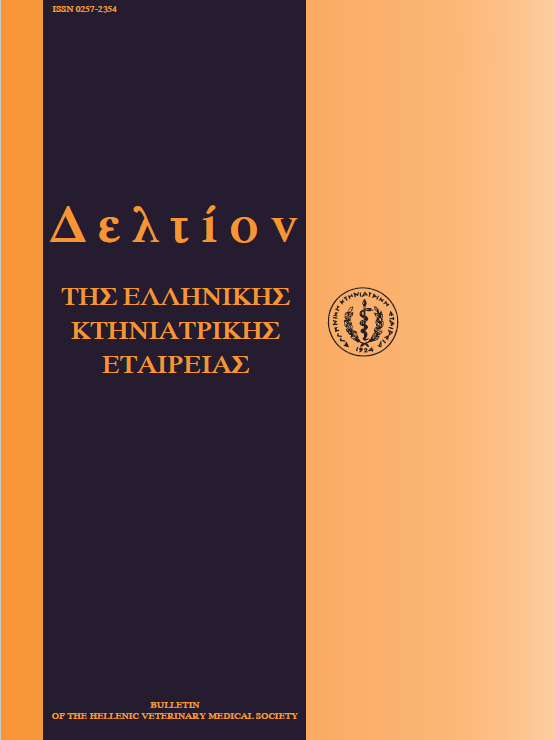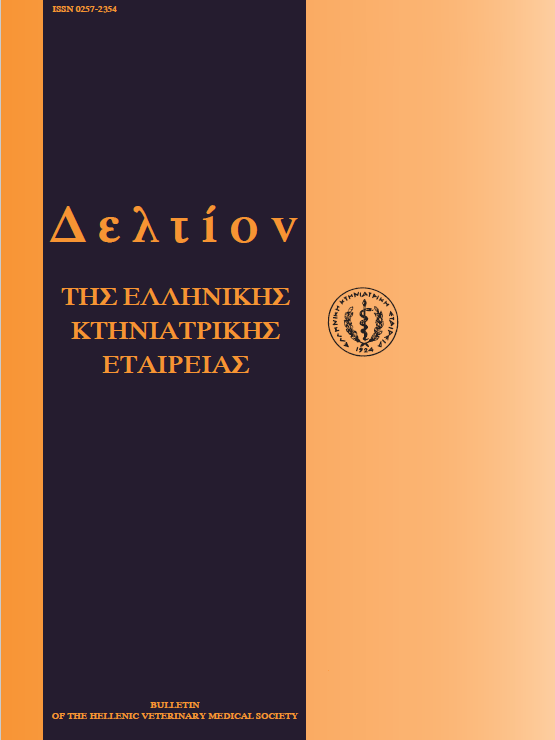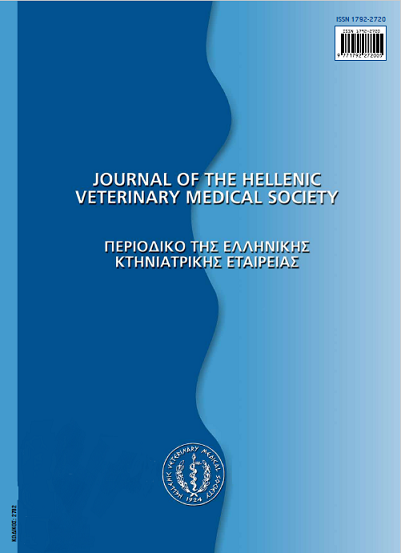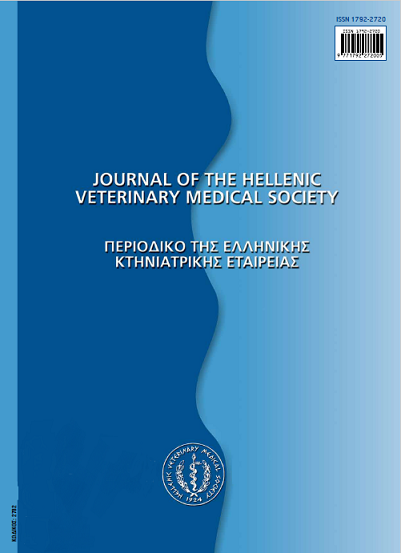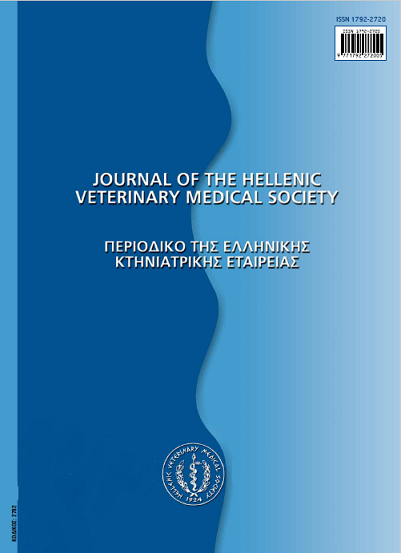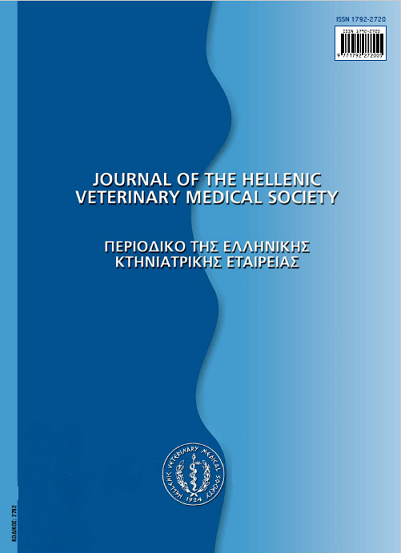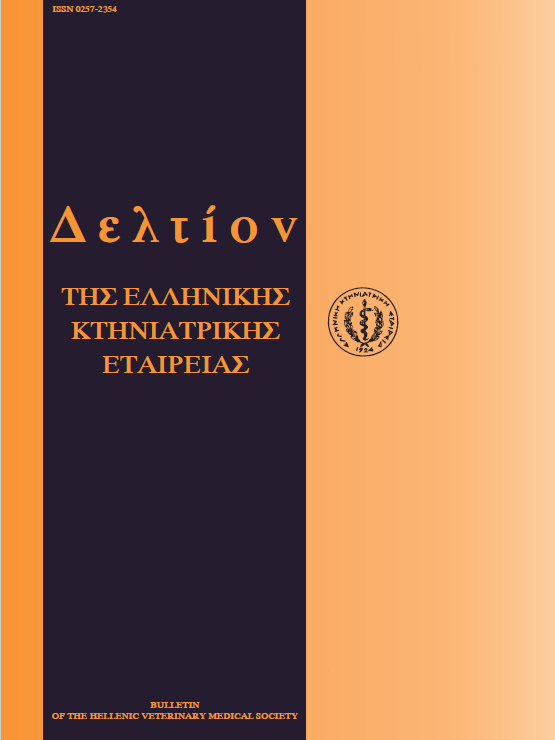Canine pemphigus folliaceus: report of five clinical case
Abstract
Pemphigus folliaceus (PF), which is considered the most common autoimmune skin disease in the dog, is associated with the formation of autoantibodies directed against the desmosomes of the upper third of the epidermis, that result in loss of keratinocyte adhesion (acantholysis) and subsequent epidermal cleft formation. The clinical and histopathological findings, along with the response to treatment in 5 PF cases, either idiopathic (3/5) or secondary to trimethoprim-sulfonamides (1/5) and to allergic dermatitis (1/5), are presented and discussed, accordingly. All the 5 dogs exhibited hypotrichosis-alopecia (4/5), erythema (4/5), vesicles (1/5), pustules (5/5), crusts (5/5), epidermal collarettes (3/5), excoriations (1/5), erosions (3/5), ulcers (1/5), fissures (1/5), lichenification, thickening and folding of the skin (1/5), and footpad hyperkeratosis (1/5), that were pruritic in 3 of them. These lesions were located on the head (4/5), pinnae (4/5), limbs (3/5), body trunk (3/5) and the footpads (2/5). Diagnosis was based on the results of lesionai histopathology where the most striking finding was the presence of subcorneal pustules filled with normally looking neutrophils and acanthocytes. Moreover, pustule or crust cytology that was carried out in 3 cases, revealed clusters of acantholytic cells in 2 dogs. The treatment, that was instituted in 2/5 dogs and resulted in a complete resolution of skin lesions, was based on prednisolone in immunosuppressive dosage along with azathioprine (PF secondary to allergic dermatitis), or on a combination of dapsone, Oxytetracycline and vitamin E (idiopathic PF). The remaining 3 cases were left untreated, because one showed a spontaneous remission following withdrawal of the offending medication and the other 2 were lost to follow-up.
Article Details
- How to Cite
-
LIAPI (Μ.Β. ΛΙΑΠΗ) M. V., SARIDOMICHELAKIS (Μ.Ν. ΣΑΡΙΔΟΜΙΧΕΛΑΚΗΣ) M. N., KOUTINAS (Α. Φ. ΚΟΥΤΙΝΑΣ) A. F., & LEKKAS (Σ. ΛΕΚΚΑΣ) S. (2018). Canine pemphigus folliaceus: report of five clinical case. Journal of the Hellenic Veterinary Medical Society, 52(4), 273–280. https://doi.org/10.12681/jhvms.15457
- Issue
- Vol. 52 No. 4 (2001)
- Section
- Case Report

This work is licensed under a Creative Commons Attribution-NonCommercial 4.0 International License.
Authors who publish with this journal agree to the following terms:
· Authors retain copyright and grant the journal right of first publication with the work simultaneously licensed under a Creative Commons Attribution Non-Commercial License that allows others to share the work with an acknowledgement of the work's authorship and initial publication in this journal.
· Authors are able to enter into separate, additional contractual arrangements for the non-exclusive distribution of the journal's published version of the work (e.g. post it to an institutional repository or publish it in a book), with an acknowledgement of its initial publication in this journal.
· Authors are permitted and encouraged to post their work online (preferably in institutional repositories or on their website) prior to and during the submission process, as it can lead to productive exchanges, as well as earlier and greater citation of published work.

